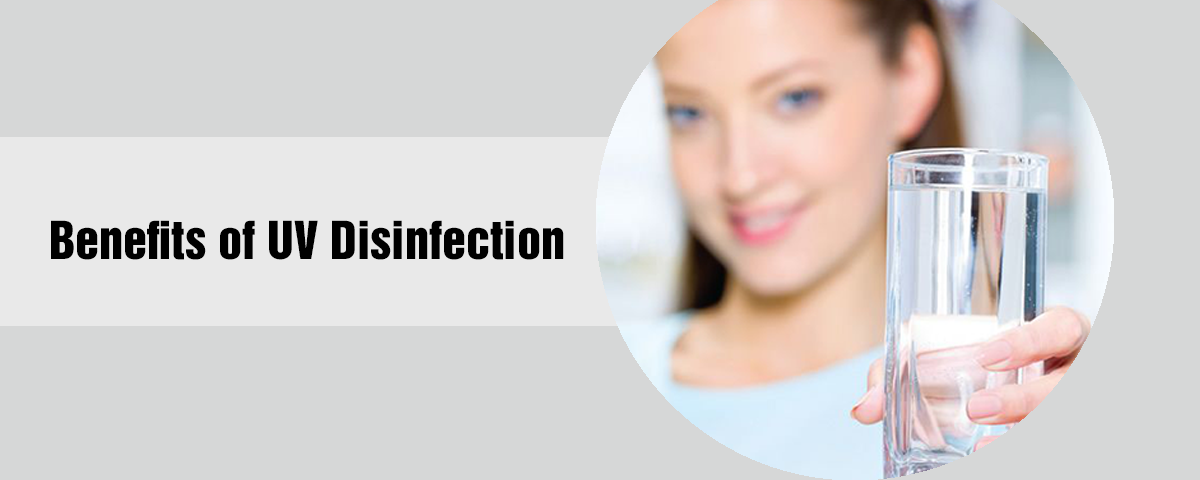AQUADROP RO
UV MODEL WATER PURIFIERS
Benefits of UV water Purifiers and service for UV water purifiers

Water contamination and water scarcity are the most discussed points, and both are linked to each other. Reframing and water scarcity as safe water scarcity is the right way to frame it.
Disinfection refers to the removal, deactivation, or killing of pathogenic microorganisms. UV disinfection is one of the oldest and most effective technologies for microbial reduction. The germicidal effect is seen at a range of 200- 300nm more specifically 254nm. The area between 240 and 280 nanometres (nm) is UV-C, commonly known as germicidal light. [4] The absorbed UV photons cause damage in the structure of DNA and RNA of the microbe, rendering the microorganism incapable of replicating, and hence losing its disease-causing capability. [1]
UV disinfection does not change the water quality or produce secondary by-products and has no effects on color, taste, and odor [2]. UV disinfection requires lesser space than other methods and equipment to purify water [2]. The effectiveness of UV disinfection depends on the water quality, time of exposure, the intensity of UV irradiation used, and the reactor configuration. UV -C is effective against viruses and even parasites such as Cryptosporidium or Giardia, [4] which are extremely resistant to chemical disinfectants, but are efficiently reduced by UV-C. [3] The time and intensity of exposure to UV-C vary according to the type of organism. One of the major disadvantages of using chemical disinfection is the secondary by-products produced by them as these by-products might have long-term health effects.
Compared to chemical disinfection UV treatment does not generate any chemical element which is harmful to the environment. Also, unlike other water treatment processes UV, disinfection does not waste water in the purification process. The water from a UV filtration system does not change its taste, odor, does not produce disinfection by-products (DBPs), has no danger of overdosing, has relatively fast treatment rates compared to sand and ceramic filters, and has low-maintenance requirements. [4]
UV in combination with the pre-filters is the best suited for potable water disinfection. The UV disinfection cannot alter the chemical parameters. A UV water purifier must be equipped with best-in-class UV technology. At the same time, parameters such as wavelength, flow rate, reactor design, component quality like the quartz sleeve, and the quality of water also play a major role. Aquadrop RO keeps the promise of microbiologically safe water with 5 stage UV water purification in all its UV water purifiers.
Is UV necessary for a water filter?
UV purification is not necessary for a water filter, but a water filter is necessary before a UV system. UV systems are most effective when water is clear, so they must have at least a five-micron pre-filter to prevent living organisms from hiding behind loose particles. You could use a sediment filter to remove dirt and debris from a well water supply or a water softener to reduce iron as prefiltration. A UV purifier is the last thing water passes through on the way to the house.
Test your water quality before you use a UV system to make sure the water does not exceed these levels:
Hardness < 7 gpg (grains per gallon)
Iron < 0.3 ppm (parts per million)
Manganese < 0.05 ppm
Turbidity < 1 NTU (nephelometric turbidity units)
UVT < 75%
Tannins < 0.1 ppm
How to Maintain Your UV System
1. Turn off the water. Locate your water main and turn off all water entering the home. Make sure that all faucets in your home are shut off and no water-using appliances are in use.
2. Isolate the UV system. Turn off any power being fed to the UV system. If the system is still warm, wait until it has cooled down.
3. Unscrew the safety cap and remove the lamp plug. Make sure you are wearing protective gloves or handling the lamp with a cloth. The oils on your skin will damage the integrity of the quartz sleeve and lamp.
4. Remove the UV lamp and sleeve from the chamber. Unscrew the sleeve bolt and discard the old o-rings. You will be replacing these with new o-rings when you install the new lamp. Carefully remove the old lamp from the quartz sleeve.
5. Clean the quartz sleeve. Take a cloth soaked in CLR and thoroughly clean any stains or discolorations from the quartz sleeve. Be careful, as quartz sleeves are quite fragile and can easily break. If you haven’t replaced your sleeve in several years, you should also take this opportunity to install a brand new sleeve.
6. Replace the o-rings on the sleeve.
7. Install a new UV lamp into the assembly. Be careful not to overtighten the lamp, as it may result in cracking.
8. Insert the new lamp and sleeve into the system. Make sure the lamp is correctly aligned with the lamp plug before replacing the safety cap.
9. Turn the water back on and check for leaks. Run water through the system, making sure the performance is unaltered and there are no leaks. As always, refer to your manufacturer’s instructions to check for routine disinfection and maintenance procedures.
Keep in mind, different UV systems will be configurated differently. This may require you to take different steps to extract the sleeve and lamp during replacement. However, whenever you are replacing your UV lamp, you should always take the opportunity to clean the quartz sleeve and replace the o-rings.
